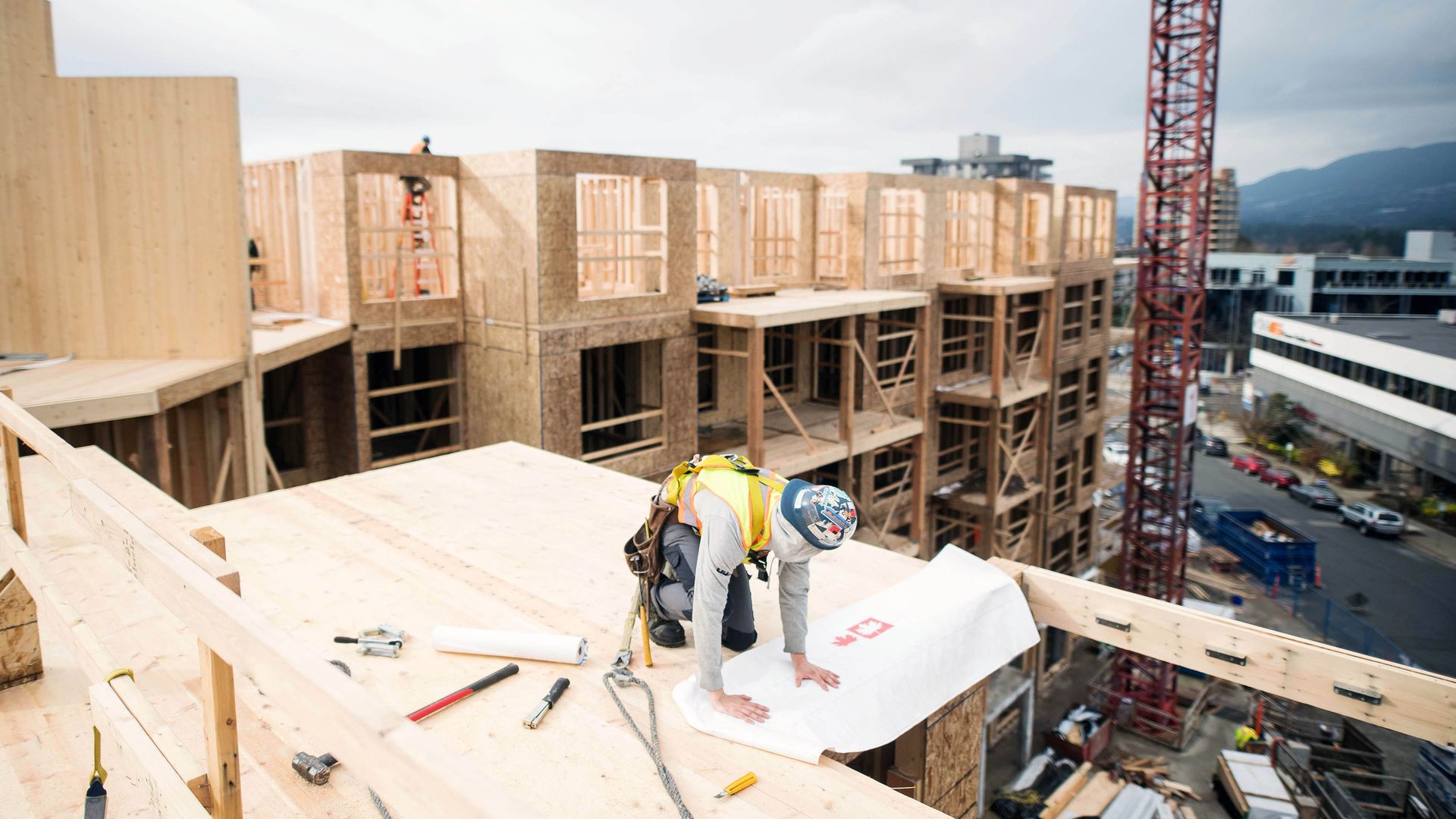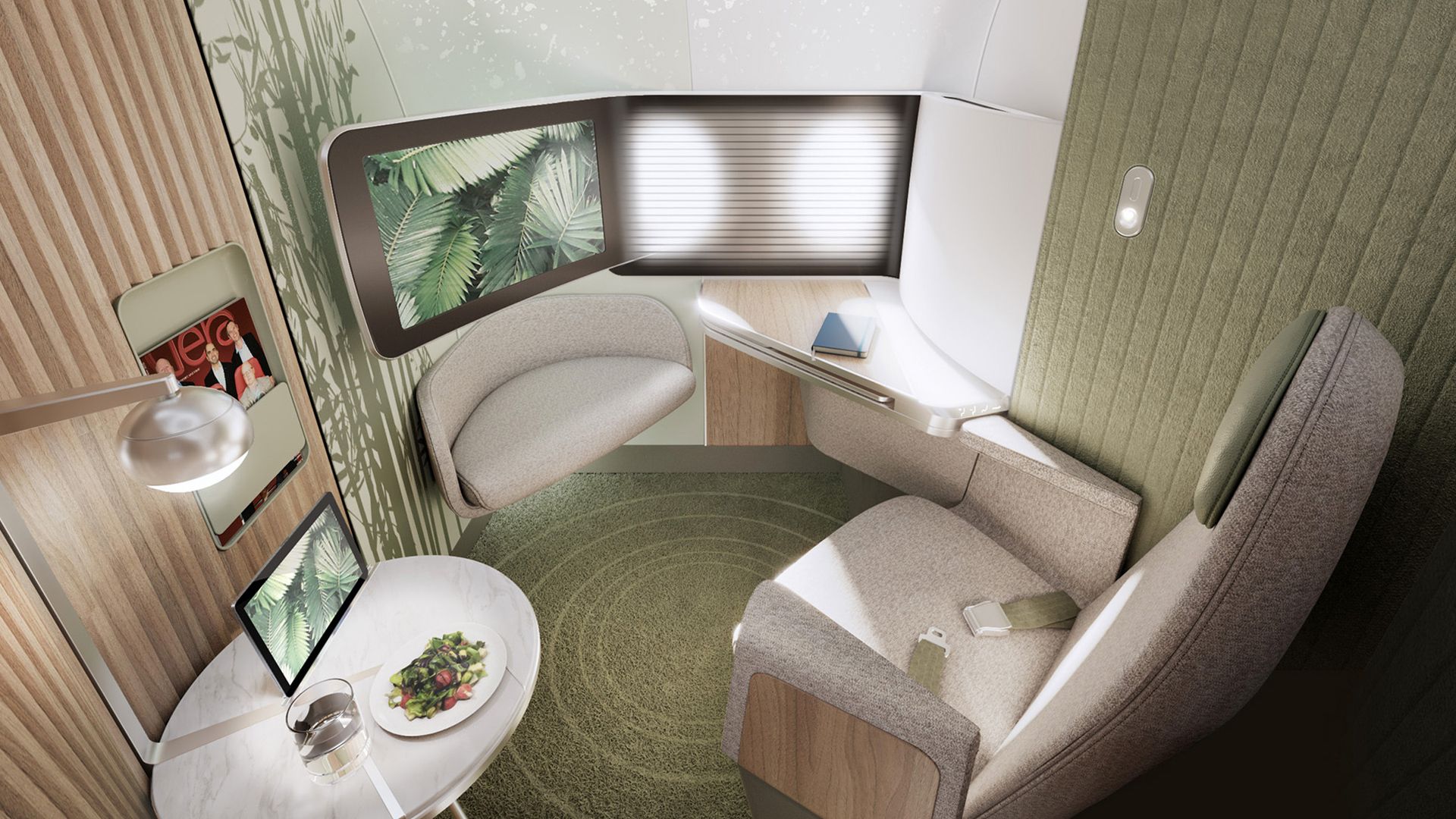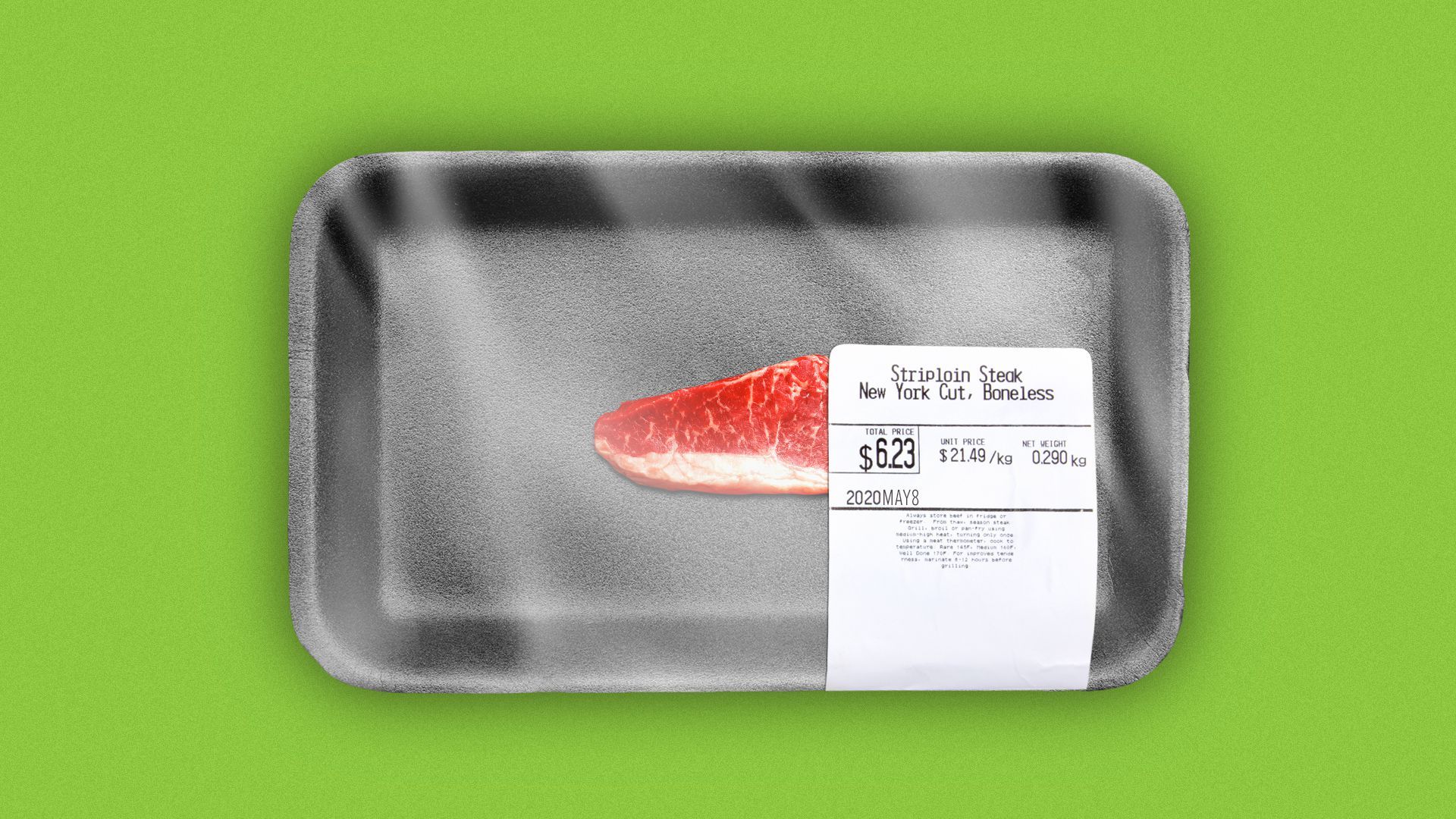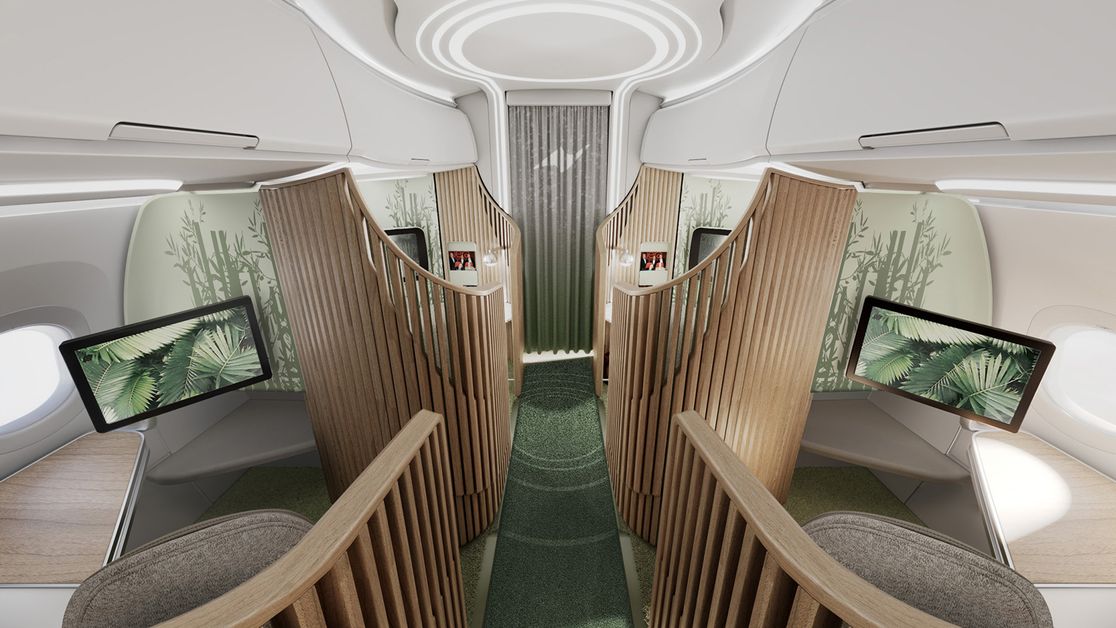| | | | | | | | | | | Axios What's Next | | By Jennifer A. Kingson and Joann Muller · Apr 26, 2022 | | The week is off to a raucous start. It's only Tuesday. Think about this: Elon Musk will soon run three giant companies: Tesla, SpaceX and Twitter. - What else is on the horizon about the way we'll live, work and get around? Email us at whatsnext@axios.com.
Today's Smart Brevity count: 1,263 words ... 4½ minutes. | | | | | | 1 big thing: The rise of wooden skyscrapers |  | | | A worker at a mass timber construction site in North Vancouver, British Columbia, Canada. Photographer: James MacDonald/Bloomberg via Getty Images | | | | The "mass timber" movement is a growing worldwide effort to build high-rises and other buildings out of wood composites rather than steel and concrete, for environmental reasons, Jennifer A. Kingson writes. Why it matters: Lightweight, attractive and sturdy, mass timber buildings are considered carbon-friendly alternatives to conventional ones — and some people prefer their warmth, character and texture. - A recent international building code change means that mass timber structures can rise to 18 stories — unless you get a variance to go higher.
- Vox calls mass timber "the hottest thing in architecture this century," saying it "amounts to 'wood, but like Legos.'"
How it works: Mass — or "massive" — timber is "wood that is glued and pressed in special ways to make it similar in strength to concrete and steel and thus capable of replacing those building materials even for skyscrapers and other massive edifices," per the WSJ. - You still need steel and concrete for the foundation and other elements.
- And if you're wondering about the fire risk, it's minimal — because "unlike wood planks or beams cut from individual trees, the massive blocks of engineered timber used in large-scale construction projects do not burn through: they char only on the surface," The New Yorker tells us.
Driving the news: While Europe has embraced the mass timber movement, the U.S. is starting to catch up. - In October, the New York City Council approved the use of mass timber for buildings up to 85 feet tall — six or seven stories.
- An 80-story wooden tower called the River Beech project is proposed for Chicago.
- Carbon12, an eight-story condominium building in Portland, Oregon, made of cross-laminated timber (CLT), was in the vanguard when it opened in 2018.
- When it's finished this summer, Ascent, a 25-story apartment tower in Milwaukee, "will be the world's tallest mass timber structure (284 feet), surpassing Mjøstårnet in Brumunddal, Norway (277 feet)," according to Building Design + Construction magazine (BD+C).
What they're saying: Advocates say mass timber "creates less waste, leaves a lighter carbon footprint (because wood sequesters carbon), and can be quicker and quieter than other construction modes," per BD+C. The other side: Detractors question "whether the logging and manufacturing required to produce the new material outweigh any benefits," journalist Jim Robbins writes for the Yale School of the Environment. What's next: Expect to see lots of mass timber buildings rising in cities across the U.S. — apartment towers and office complexes — and marketed as "green." Keep reading. |     | | | | | | 2. Tempers flare over emotion-sensing AI |  | | | Illustration: Annelise Capossela/Axios | | | | Software that uses machine learning to attempt to detect human emotions is emerging as the latest flashpoint in the debate over the use of artificial intelligence, Ina Fried writes in Login. Why it matters: Proponents argue that such programs, when used narrowly, can help teachers, caregivers and even salespeople do their jobs better. Critics say the science is unsound and the use of the technology dangerous. Driving the news: Though emotion-tracking technology has been evolving for a while, it's rapidly moving into broader use now, propelled in part by the pandemic-era spread of videoconferencing. - Startups are deploying it to help sales teams assess customers' responses to their pitches, and Zoom could be next, as Protocol reports.
- Intel has been working with Classroom Technologies on software that can give teachers a better sense of when students working online are struggling.
What they're saying: "Emotion AI is a severely flawed theoretical technology, based in racist pseudoscience, and companies trying to market it for sales, schools or workplaces should just not," Fight for the Future's Caitlin Seeley George said in a statement to Axios. - "It relies on the assumption that all people use the same facial expressions, voice patterns and body language. This assumption ends up discriminating against people of different cultures, different races and different abilities."
The other side: Those working on the technology say that it's still in its early stages but can be a valuable tool if applied only to very specific cases and sold only to companies who agree to limit its use. - With sufficient constraints and safeguards, proponents say the technology can help computer systems better respond to humans. It's already working, for example, to help users of automated call systems get transferred to a human operator when the software detects anger or frustration.
Yes, but: Even some who are actively working on the technology worry how others could misuse it. |     | | | | | | 3. A first-class upgrade: Floating furniture |  | | | How first class air travel could look in the future. Photo courtesy of Teague | | | | First class air travel is getting an upgrade, with more privacy, larger fold-out beds, and more space for passengers and their belongings. The big picture: The rise of premium leisure travel is one of the biggest trends to come out of the pandemic. Airlines are catering to this new class of traveler by investing in expanded cabins, more comfortable seats and fancier airport lounges. Here's one vision for the first class cabin of the future, from Teague, a Seattle-based design firm: - Its "Elevate" concept is an expansive private suite with a larger fold-out bed, more floor space, customized lighting and more stowage capacity.
- All the extra space is possible because of a novel design twist: The furniture is mounted to the plane's sidewalls (instead of the floor) using lightweight, composite braces designed by NORDAM, a big supplier to the aerospace industry.
Why it matters: Airlines are increasingly using smaller, more efficient aircraft for long-haul flights. But that can leave first class passengers feeling a little cramped. - By eliminating fixed structures, Teague's "floating" design allows for a more expansive, home-like environment, even on narrow-body, single-aisle jets.
- There's an added benefit for airlines: The lightweight structures make flights more fuel-efficient.
What to watch: No word on when the design might show up on your next flight, but Boeing is an innovation partner of Teague. First class cabin offers privacy, even on single-aisle jets. Photo courtesy of Teague Share this story. |     | | | | | | A message from Axios | | The smarter, faster start to your workday | | |  | | | | Start your workday with deeper news and analysis, custom-made for your profession. How it works: Axios Pro unlocks daily premium newsletters, exclusive reporting and subscriber-only events, designed to improve your decision-making. Use code PRO200 at checkout to get $200 off your subscription. | | | | | | 4. Another automotive icon goes electric |  | | | Photo courtesy of GM | | | | The Corvette roar is turning into a purr, Nathan Bomey writes. Driving the news: General Motors announced Monday that it will make electric versions of the iconic sports car, replacing the vehicle's rumbling engine with the soft whir of an EV powertrain. - GM president Mark Reuss said on LinkedIn that the plans include a fully electric 'Vette and an "electrified" version, which is industry parlance for hybrid or plug-in hybrid.
The big picture: Sports cars and luxury rides have been the first vehicles to go electric, so the 'Vette makes perfect sense as an EV. Joann's thought bubble: Monday's announcement from GM appears to have been carefully timed to steal some of Ford's thunder about another iconic vehicle this week. - Ford's F-150 Lightning electric pickup truck begins production today in Dearborn, Michigan.
What's next: The first electrified version of the Chevrolet Corvette will arrive in 2023, GM says. |     | | | | | | 5. Shrinkflation takes hold |  | | | Illustration: Aïda Amer/Axios | | | | Rising food prices are slowly changing our grocery store shopping habits, already kind of weird after the pandemic pushed more Americans to eat at home, industry analysts tell Axios' Emily Peck. Why it matters: High inflation is affecting all kinds of markets — from nickel to housing to stocks to supermarkets — and changing the way we live. State of play: Some folks are swapping different types of meat, or butchering whole chickens rather than buying pre-packaged breasts or thighs, for example. And some are simply choosing smaller packs of meat. - The cost of beef is up 20% over last year and chicken is up 13%, according to the latest Consumer Price Index report.
- "If you watch the meat case, [shoppers] will rifle through some of those packs until they find the lowest price," said Joan Driggs, vice president of content at IRI, a market research firm.
What we're seeing: Stores are often selling smaller packages for the same price, otherwise known as "shrinkflation." |     | | | | | | A message from Axios | | The smarter, faster start to your workday | | |  | | | | Start your workday with deeper news and analysis, custom-made for your profession. How it works: Axios Pro unlocks daily premium newsletters, exclusive reporting and subscriber-only events, designed to improve your decision-making. Use code PRO200 at checkout to get $200 off your subscription. | | | | Was this email forwarded to you? Get your daily dose of What's Next magic by signing up for our free newsletter here. |  | It's called Smart Brevity®. Over 200 orgs use it — in a tool called Axios HQ — to drive productivity with clearer workplace communications. | | | | | | Axios thanks our partners for supporting our newsletters. If you're interested in advertising, learn more here.
Sponsorship has no influence on editorial content. Axios, 3100 Clarendon Blvd, Suite 1300, Arlington VA 22201 | | | You received this email because you signed up for newsletters from Axios.
Change your preferences or unsubscribe here. | | | Was this email forwarded to you?
Sign up now to get Axios in your inbox. | | | | Follow Axios on social media:    | | | | | |











No comments:
Post a Comment